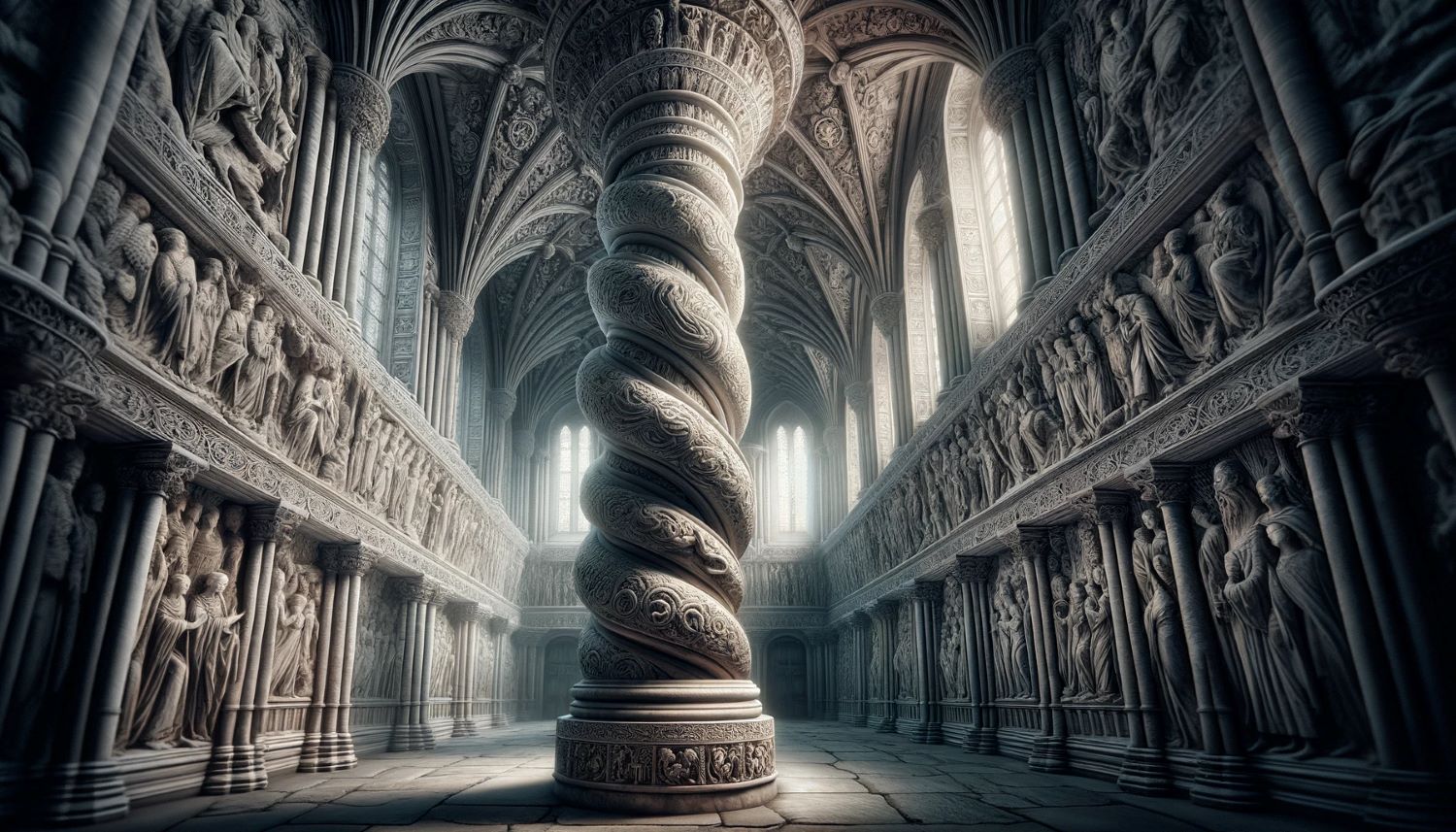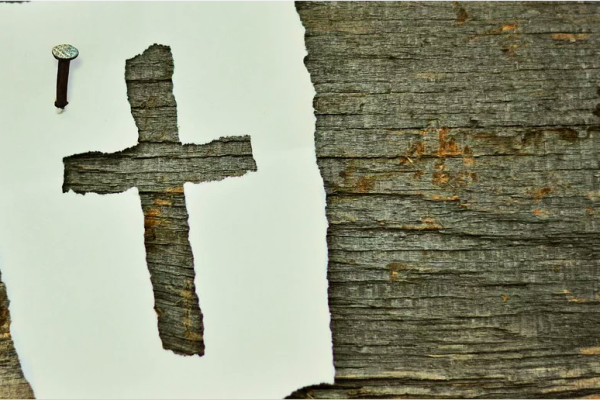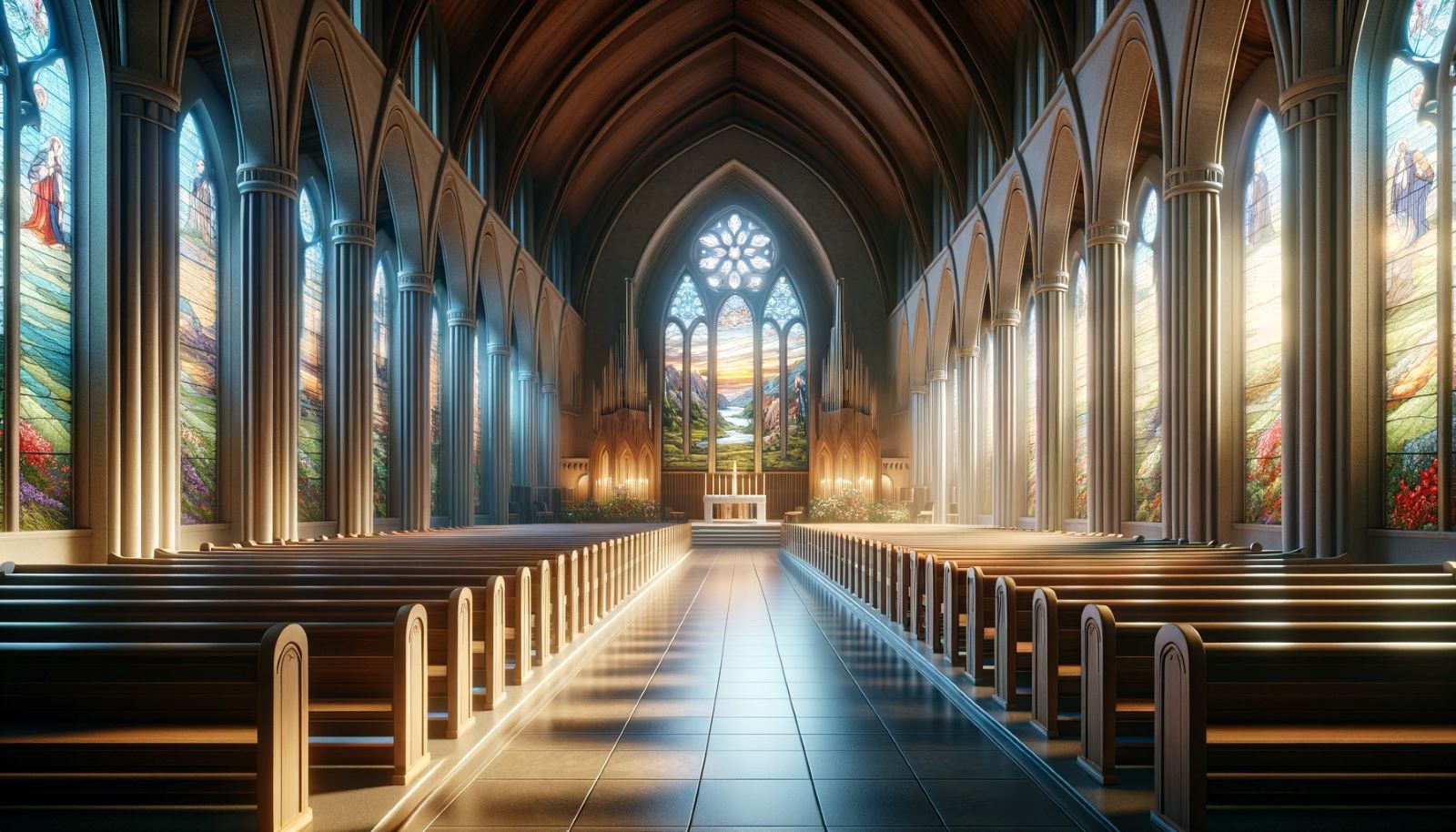Home>Arts and Culture>Why Is Rosslyn Chapel So Famous


Arts and Culture
Why Is Rosslyn Chapel So Famous
Published: March 4, 2024
Discover the allure of Rosslyn Chapel and its significance in arts and culture. Uncover the secrets behind its fame and historical importance.
(Many of the links in this article redirect to a specific reviewed product. Your purchase of these products through affiliate links helps to generate commission for Christian.net, at no extra cost. Learn more)
Table of Contents
The History of Rosslyn Chapel
Rosslyn Chapel, also known as the Collegiate Chapel of St Matthew, is a 15th-century chapel located in the village of Roslin, Midlothian, Scotland. The chapel was founded by Sir William Sinclair, 1st Earl of Caithness, a member of the Scottish noble Sinclair family. Construction of the chapel began in 1446 and continued for nearly 40 years, with the chapel being consecrated in 1486. The chapel was intended to be a place of worship for the Sinclair family and a center for Catholic worship in the region.
The chapel's architecture is a stunning example of late Gothic design, featuring intricate stonework and elaborate carvings. The chapel's construction was halted in the mid-17th century and was not fully completed according to the original plans. Despite this, Rosslyn Chapel remains a masterpiece of medieval architecture and a testament to the skill and craftsmanship of the artisans who worked on its construction.
The chapel's history is steeped in legend and mystery, with numerous stories and myths surrounding its origins and purpose. Over the centuries, Rosslyn Chapel has captured the imagination of people around the world, drawing visitors and researchers eager to uncover its secrets and unravel its enigmatic past.
Read more: How Old Is Rosslyn Chapel
The Intricate Carvings and Symbolism
The interior of Rosslyn Chapel is adorned with a breathtaking array of intricate carvings and symbolic imagery that have fascinated visitors and scholars for centuries. The chapel's stonework is a testament to the skill and artistry of the craftsmen who worked on its construction. Every surface of the chapel seems to be covered in carvings, from the pillars and arches to the ceiling and walls. The carvings depict a wide range of subjects, including biblical scenes, foliage, geometric patterns, and mysterious symbols.
Symbolism in the Carvings
The symbolism found in the carvings of Rosslyn Chapel is a subject of much debate and speculation. Some researchers believe that the carvings contain hidden messages and esoteric symbolism, possibly linked to the traditions of Freemasonry, Templar Knights, or even the Holy Grail. Others interpret the carvings as representations of Christian theology and morality, with each figure and motif conveying a specific religious meaning.
Green Men and Other Motifs
One of the most famous motifs found in the carvings of Rosslyn Chapel is the "Green Man," a mysterious figure depicted with foliage emerging from his mouth and surrounding his face. The Green Man is a symbol found in various cultures and is often associated with rebirth, nature, and fertility. In addition to the Green Man, the carvings feature a diverse array of other motifs, including angels, demons, musicians, and animals, each with its own symbolic significance.
The Apprentice Pillar
Perhaps the most renowned carving in Rosslyn Chapel is the Apprentice Pillar, also known as the "Prentice Pillar." Legend has it that the master mason responsible for carving the pillar was murdered by his jealous apprentice, who sought to prove his own skill by creating an equally impressive pillar. The intricate design of the pillar and the tragic tale associated with it have contributed to its mystique and made it a focal point of fascination for visitors.
Read more: Why Is There A Chapel In A Hospital
The Mystery Continues
The true meaning behind the carvings and symbolism of Rosslyn Chapel remains a subject of intrigue and speculation. The chapel's enigmatic imagery has inspired countless theories and interpretations, fueling the ongoing quest to unravel the secrets hidden within its walls. Whether viewed as a repository of esoteric knowledge, a testament to medieval craftsmanship, or a sacred space rich in spiritual symbolism, the carvings of Rosslyn Chapel continue to captivate and inspire all who behold them.
The Da Vinci Code Connection
The fame of Rosslyn Chapel received a significant boost with the publication of Dan Brown's bestselling novel, "The Da Vinci Code," in 2003. The novel weaves a complex and thrilling narrative that revolves around a series of cryptic clues and enigmatic symbols, with Rosslyn Chapel featuring prominently in the storyline. The novel's protagonist, Robert Langdon, a symbologist, finds himself entangled in a web of historical mysteries and religious intrigue, ultimately leading him to Rosslyn Chapel in search of hidden truths.
The novel's portrayal of Rosslyn Chapel as a repository of ancient secrets and the possible resting place of the Holy Grail captured the public's imagination and sparked widespread interest in the chapel. Visitors flocked to Rosslyn Chapel, eager to explore its hallowed halls and uncover the enigmatic symbolism depicted in the novel. The Da Vinci Code's immense popularity propelled Rosslyn Chapel into the global spotlight, transforming it into a must-visit destination for enthusiasts of history, art, and mystery.
The novel's fusion of fact and fiction, blending historical references with a compelling narrative, blurred the lines between reality and imagination, further fueling the intrigue surrounding Rosslyn Chapel. While "The Da Vinci Code" is a work of fiction, its impact on popular culture and its role in elevating the profile of Rosslyn Chapel cannot be overstated. The novel's exploration of esoteric themes, religious symbolism, and the enigma of Rosslyn Chapel has left an indelible mark on the public's perception of the chapel, ensuring its enduring renown for years to come.
The Mystery Surrounding the Chapel
The enigmatic aura that shrouds Rosslyn Chapel has given rise to a myriad of mysteries and speculations, captivating the imagination of scholars, historians, and visitors alike. The chapel's rich tapestry of legends, unexplained symbols, and historical ambiguities has fueled a persistent fascination with uncovering the truth behind its cryptic allure.
1. The Lost Scrolls
Legend has it that the Sinclair family, the founders of Rosslyn Chapel, safeguarded a collection of ancient scrolls containing esoteric knowledge and profound wisdom. These scrolls, rumored to have been hidden within the chapel's walls, are said to hold the key to unlocking the secrets of the universe. The tantalizing prospect of discovering these lost scrolls has spurred numerous quests and expeditions, each seeking to unveil the hidden truths concealed within the chapel's hallowed confines.
Read more: Why Was The White Chapel In Egypt Built
2. Templar Connections
Rosslyn Chapel's association with the Knights Templar has long been a subject of intrigue and speculation. Some theories posit that the chapel served as a repository for Templar treasures, relics, and sacred knowledge, safeguarded by the Sinclair family. The Templars' enigmatic legacy, coupled with their historical ties to Scotland, has led to conjecture about their potential influence on the construction and symbolism of the chapel, adding an additional layer of mystery to its enigmatic allure.
3. Esoteric Symbolism
The intricate carvings and symbolic motifs adorning Rosslyn Chapel have sparked intense debate and interpretation regarding their esoteric significance. Some researchers believe that the chapel's carvings conceal hidden messages, allegories, and metaphysical teachings, possibly linked to ancient mystery traditions or arcane wisdom. The quest to decipher the true meaning behind these enigmatic symbols continues to captivate scholars and enthusiasts, perpetuating the chapel's enigmatic mystique.
4. The Holy Grail
The enduring legend of the Holy Grail, the sacred vessel associated with divine mysteries and the quest for spiritual enlightenment, has been intertwined with the lore surrounding Rosslyn Chapel. Speculation abounds regarding the potential connection between the chapel and the fabled relic, with some theories suggesting that the chapel's symbolism and history hold clues to the Grail's elusive whereabouts. The allure of uncovering the truth behind this timeless enigma has contributed to the enduring fascination with Rosslyn Chapel's mysterious legacy.
5. Unanswered Questions
Despite centuries of scholarly inquiry and historical scrutiny, Rosslyn Chapel continues to elude definitive explanations for many of its enigmatic features. The unresolved mysteries surrounding the chapel serve as an enduring invitation for exploration, contemplation, and discovery, ensuring that its enigmatic allure will persist for generations to come.
The Restoration and Preservation Efforts
The preservation and restoration of Rosslyn Chapel have been ongoing endeavors aimed at safeguarding the architectural splendor and historical significance of this iconic structure for future generations. The chapel's rich heritage and intricate craftsmanship have necessitated meticulous efforts to ensure its longevity and cultural preservation.
1. Preservation Initiatives
Preservation initiatives at Rosslyn Chapel have encompassed a range of measures designed to protect the chapel from environmental degradation, structural wear, and the passage of time. These efforts have included the implementation of climate control systems to regulate temperature and humidity, preventing moisture damage and preserving the delicate stonework and carvings that adorn the chapel's interior. Additionally, conservation treatments have been applied to the chapel's stone surfaces to mitigate the effects of weathering and aging, safeguarding its architectural integrity.
2. Restoration Projects
The restoration of Rosslyn Chapel has involved comprehensive projects aimed at addressing structural vulnerabilities and restoring the chapel to its original grandeur. Skilled artisans and conservation experts have meticulously undertaken the repair and cleaning of the chapel's intricate carvings, ensuring that their exquisite details are preserved for future generations to admire. Furthermore, efforts to stabilize the chapel's foundations and address structural concerns have been integral to the restoration process, safeguarding the chapel's structural stability and architectural magnificence.
3. Educational Outreach
In addition to physical preservation efforts, educational outreach programs have played a vital role in raising awareness about the historical significance of Rosslyn Chapel and the importance of its preservation. These initiatives have sought to engage the public in the chapel's heritage, fostering a sense of stewardship and appreciation for its cultural value. Educational tours, workshops, and interpretive displays have provided visitors with insights into the chapel's history, architecture, and the ongoing efforts to conserve its legacy, fostering a deeper understanding of the significance of preservation endeavors.
Read more: Top 60 Words Of Encouragement For Men
4. Collaborative Partnerships
Collaborative partnerships with heritage organizations, conservation groups, and academic institutions have been instrumental in advancing the preservation and restoration efforts at Rosslyn Chapel. These partnerships have facilitated the exchange of expertise, resources, and best practices, enhancing the effectiveness of conservation initiatives and ensuring that the chapel's heritage is safeguarded through collective expertise and shared commitment to preservation.
5. Future Preservation Challenges
As Rosslyn Chapel continues to inspire awe and captivate visitors from around the world, the challenges of preserving its cultural legacy persist. Ongoing efforts to address environmental impacts, sustain conservation practices, and adapt to evolving preservation standards will be essential in safeguarding the chapel's heritage for future generations. By embracing these challenges with dedication and innovation, the preservation of Rosslyn Chapel will continue to uphold its status as a cherished cultural treasure and a testament to the enduring legacy of medieval craftsmanship and artistry.











